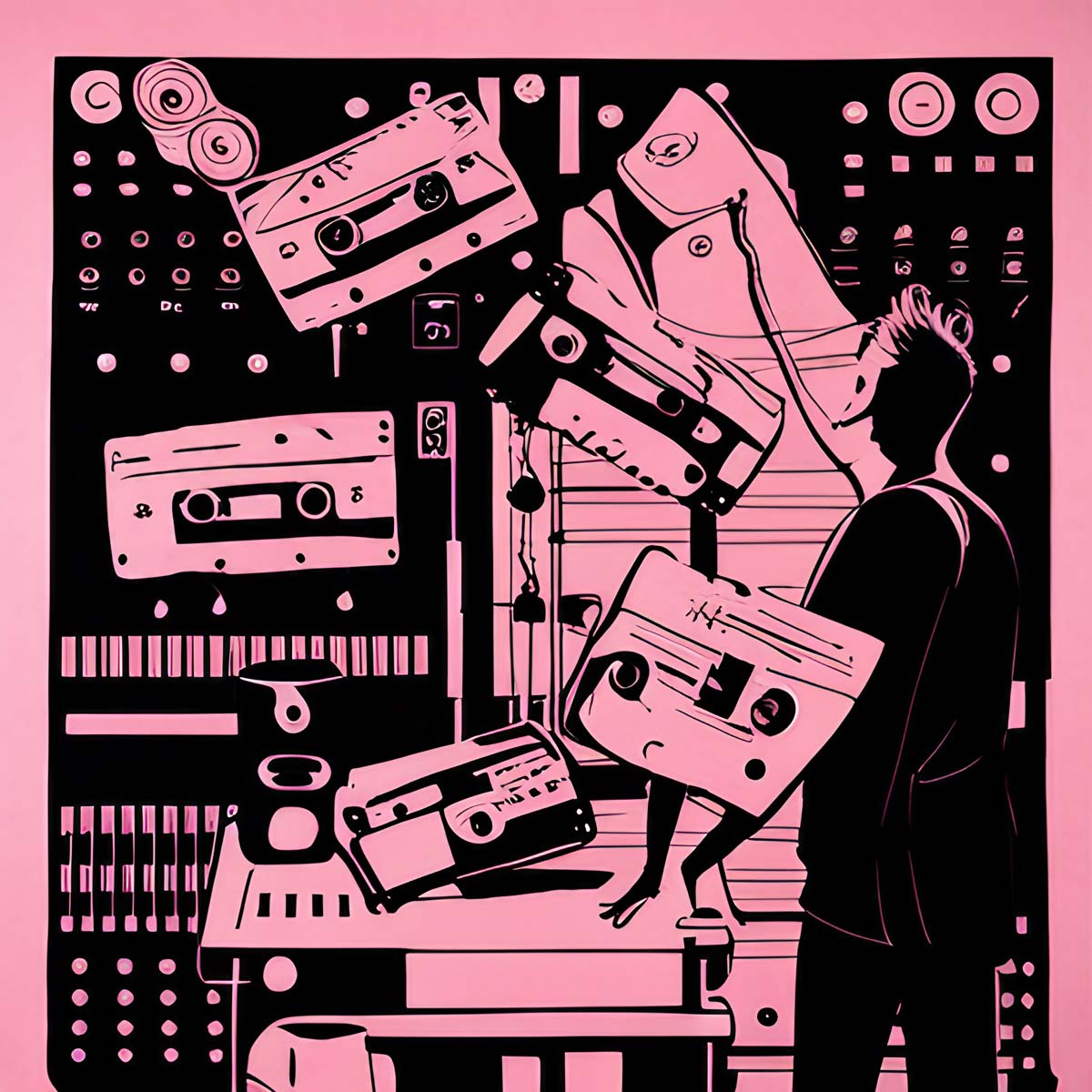Your cart is currently empty!

Preserving the Artistic Freedom of Cassette Culture
Cassette Culture, a movement that emerged in the 1980s, is characterized by a profound commitment to artistic freedom and the democratization of sound recording. Unlike traditional music industry models, Cassette Culture embraces an ethos of accessibility and inclusivity, empowering individuals to express themselves through music, regardless of their background or resources.
At the heart of Cassette Culture is the belief that artistic expression should not be limited by financial barriers or professional gatekeepers. Cassette tapes, with their relatively low production costs, provide an affordable medium for musicians to create, record, and distribute their work, fostering a vibrant and diverse music scene.
Cassette Culture also emphasizes the value of collaboration and community. Through networking and the sharing of resources, cassette labels, artists, and fans connect with each other, fostering a sense of belonging and mutual support. This collaborative spirit transcends geographic boundaries, connecting musicians from around the world.
Furthermore, Cassette Culture is often driven by a rejection of mainstream music industry norms. Artists within this movement seek to explore alternative sounds and defy commercial pressures, creating music that is experimental, eclectic, and deeply personal. By embracing unconventional approaches and challenging established genres, Cassette Culture artists push the boundaries of musical creativity.
In an era dominated by digital technology and streaming platforms, Cassette Culture offers a unique and tangible form of musical experience. The physicality of cassette tapes, with their distinctive sound and tactile quality, evokes a sense of nostalgia and authenticity for many listeners. The act of listening to a cassette tape becomes an immersive and intimate experience, connecting listeners with the artists’ creative process and vision.
Preserving and Documenting Cassette Culture
Recognizing the significance of Cassette Culture, various individuals have undertaken the task of preserving and documenting its history and contributions. One such effort is the publication GAJOOB, a magazine dedicated to showcasing the underground cassette scene. GAJOOB publishes interviews with artists, reviews of cassette releases, and articles exploring the cultural and social implications of Cassette Culture.
Other initiatives include the creation of online databases and archives, such as http://tapeattack.blogspot.com/ – http://stahlfabrik.blogspot.com/ –http://nostalgie-de-la-boue.blogspot.com/
Also, archive.org has a ton of it.
These resources provide access to a vast collection of cassette recordings, making them available for research and exploration by scholars, musicians, and music enthusiasts alike.
The Future of Cassette Culture
As technology continues to evolve, the future of Cassette Culture remains uncertain. However, the underlying principles of artistic freedom, collaboration, and community that define this movement are timeless. Cassette Culture continues to inspire and empower musicians to pursue their creative visions, offering an alternative path for those seeking to express themselves through sound.
While new technologies may emerge, the essence of Cassette Culture is likely to endure, as individuals continue to find value in the physicality, accessibility, and community-building aspects of this unique art form.
by
Tags:

- Ads (3)
- Albums (138)
- Artificial Intelligence (1)
- Audio Art (13)
- Books (3)
- Briyan (1)
- Business (5)
- Cassette Culture Shock (3)
- Channels (2)
- Collaboration Projects (4)
- Comics (1)
- Creative (10)
- Discover Sounds (1)
- Editorial (2)
- GAJOOBTube (2)
- Gear (8)
- Instruments (4)
- Interviews (9)
- Labels (14)
- Letters (3)
- Library (14)
- Links (5)
- Merch (2)
- News (2)
- People (17)
- Performance (1)
- Podcast (1)
- Profiles (29)
- Projects (0)
- Tapegerm (6)
- Uncategorized (7)
- Video (3)
- Video & Vlogging (0)
- Vlogs (1)
- Websites (6)
- Zine Making (1)
- Zines (11)

*Purchasing via Amazon affiliate links helps support our efforts at no additional cost to you. Thank you!

